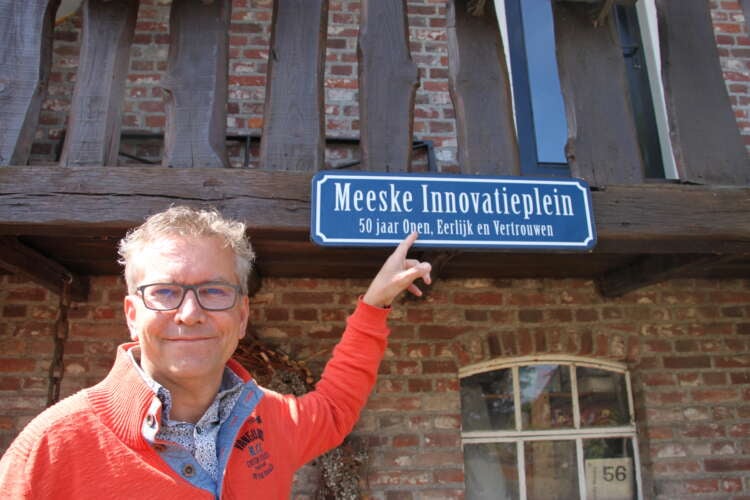Innovation is the oxygen of the economy. At the same time, it is a buzzword. Put the word 'innovative' in front of (or behind) something and immediately you are hip, modern, and relevant. Unfortunately, in practice, I see that very few companies understand what innovation really means. It goes far beyond simply bringing 'something new' to the market.
Innovation is a mindset, a way of thinking and acting. And that can be learned.
In the more than 25 years that I have been active in business, I have been fortunate and privileged to play in the Champions League of innovation, namely the Brainport region of Eindhoven, home to companies such as Philips, ASML, VDL, and TFS. In this sector, innovation is not a buzzword, but a dire necessity.
Below I share 7 lessons I've learned about innovation through trial and error.
1. Step out of your comfort zone
As Einstein said, you can't solve problems with the mindset that created them. Successful innovation requires being challenged to think and act creatively. No matter how safe and familiar your comfort zone feels, it is very healthy to step out of it from time to time.
For example, I regularly encourage my employees to do things that are not within their job description. For example, I ask a project manager to organize a risk management workshop. But I haven't done that before, is often the response. Then, when they do jump in at the deep end, it turns out to work out just fine.
If there is one thing I have learned, it is that people can do much more than they think. Give them that push or jump for yourself. The result: more self-confidence, new insights, and an out-of-the-box thinking and working mentality.
2. Make creative use of your network
The days when innovations took place in lonely attic rooms are far behind us. Innovating means working together. That's why your network is one of your most important assets. A network is like a treasure chest full of opportunities, but the trick is to see them and then act on them.
A few years ago a LinkedIn connection of mine posted an article in which he announced that he was going to become the innovation manager of a new Data Science institute. I had wanted to do something with Data Science for some time and sent a message back. That simple message has since led to the setting up of a Data Science program for the industry, a business trip to a top Canadian university, and an appointment as a Data Science professor.
Innovation is always about people. So my own innovation mantra reads: meet, share, connect.
3. Build an ecosystem
If you have the creative networking down pat, you are ready for the next step: building an innovation ecosystem. This is a group of like-minded companies and entrepreneurs with whom you work together to market services, products and/or projects that are profitable for all stakeholders.
At the moment, we at Holland Innovative are working with the Johan Cruyff Arena to optimize the turf through sensors, data science models and innovative turf management. The goal is to adapt the grass to the performance of the footballers, so that we can determine exactly how fast the ball rolls across the mat, for example.
That information is not only interesting for soccer clubs, but also for shoe manufacturers, who can develop special footwear for certain types of grass, and for insurers, since smart grass management can prevent injuries. In short, we realized that we have gold in our hands with our high-tech grass management.
We decided to develop an ecosystem (we call it an innovation platform), where we look for partners to develop new technology and products together and share the costs. Through my network, I was able to use an innovation platform model from a business relationship. Then I can also involve that relationship in the burgeoning ecosystem. A real win-win.
4. Bring private and business together
Instead of always keeping business and private strictly separated, they can also reinforce each other. You spend half your waking hours at the office, so why not work on your personal development there? You will benefit from this in your private life as well.
When one of my employees was suffering from stress due to a heavy project, I gave him the opportunity for management training where he learned breathing exercises. He not only got his stress under control but also started asking himself questions about his fatherhood and how he wanted his children to view him. A great example of how his business problem interfered with his personal life in a deep and meaningful way.
Thinking along with and giving space to the development of your colleagues and employees is an important pillar of successful innovation. It has an enormous impact on their personal development and situation at home, and this healthy well-being is the key to balance in your life.
5. Do something selfless for a change
A few weeks ago I sat down with a group of Brabant monks who had developed a wonderful sustainable and circular model for their brewery. Although I wasn't paid a cent for my advice, I was buzzing with energy afterwards.
Innovative ideas are born from passion. Making money from them comes later. I'd rather enjoy my work than drive an expensive car.
When you're innovating, your eyes twinkle with lights, not with dollar signs.
6. Develop your social skills
According to Professor Henk Volberda, only 30 percent of innovation is determined by technical breakthroughs. The other 70 percent is due to meeting, connecting and collaborating, or social skills. I completely agree with him. Especially in the high-tech sector, where the focus is on technology, social skills are sometimes neglected.
I work a lot with voice coach Robin van Beek, who comes from the entertainment industry. He helps my people develop their social skills, so they feel good about themselves, learn to communicate better and stand up in front of a group more easily to present an idea.
Help your technical staff with their social skills, so they know how to make their brilliant 'moonshots' land back on earth too.
7. Have an eye for diversity
As an ambassador for Female Tech Heroes, earlier this year I and two other men were invited to a dinner with a hundred women. For the first time, I experienced how it feels to be in the minority as a man. That was an eye-opener. I realized that women in the high-tech world experience that difference all the time.
Social skills, one of the most essential ingredients of successful innovation (see point 6), are often more highly developed in women than in men. So make sure you have a healthy mix in your organization.
Diversity is essential for innovation. Both in terms of the male-female ratio, and in terms of ethnicity, culture, and background. You need all these different perspectives to approach and solve problems and issues.
If you follow these 7 steps, I can assure you that innovation will not remain a buzzword, but will become a daily practice. If you would like to spar with me in a more serious way, don't hesitate and contact me via LinkedIn or even better directly.
Hans Meeske
CEO of Holland Innovative
hans.meeske@holland-innovative.nl


.jpg?width=200&name=Holland%20Innovative%20summer%20academy%20-%20Project%20Management%20Masterclass%202%20(2).jpg)